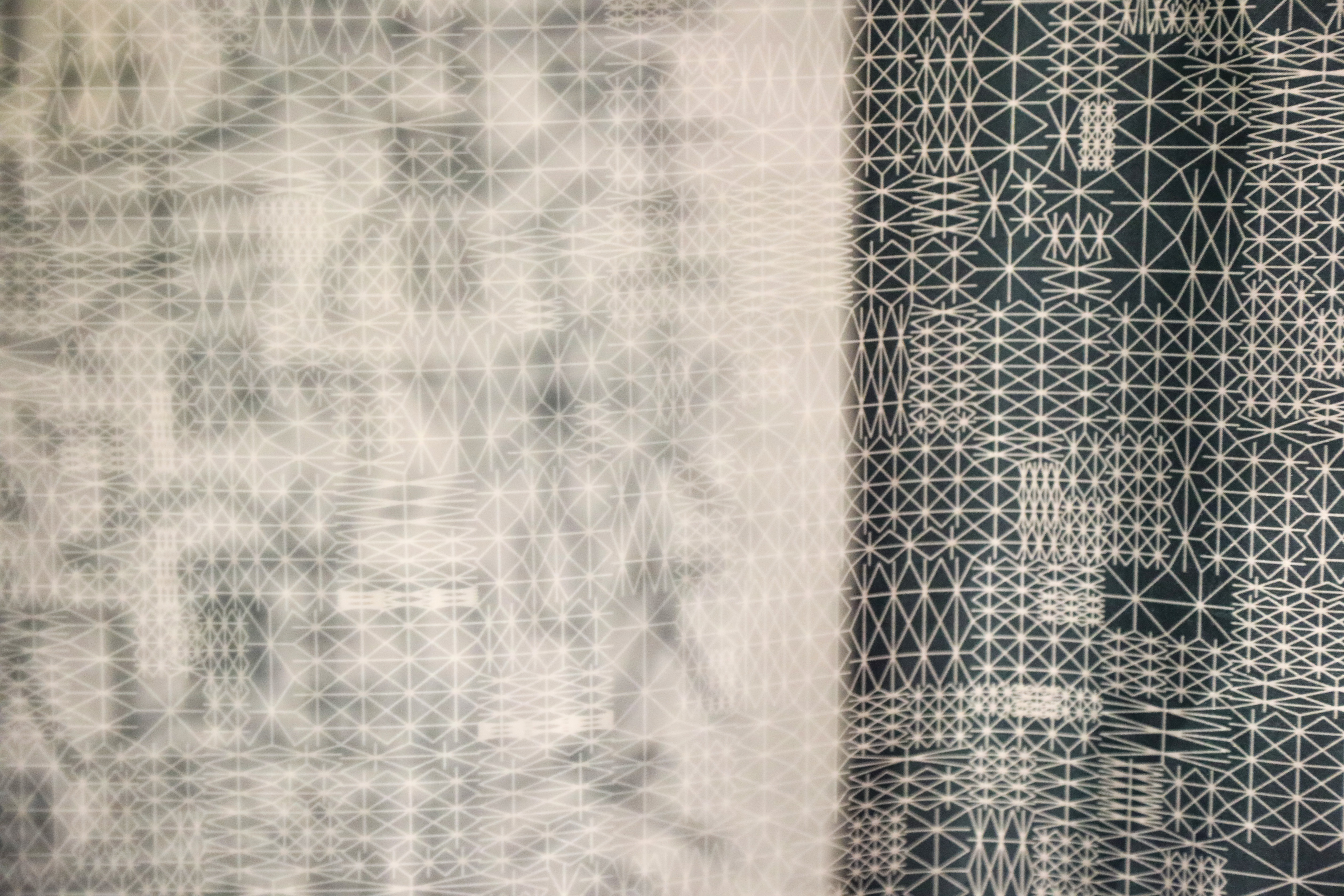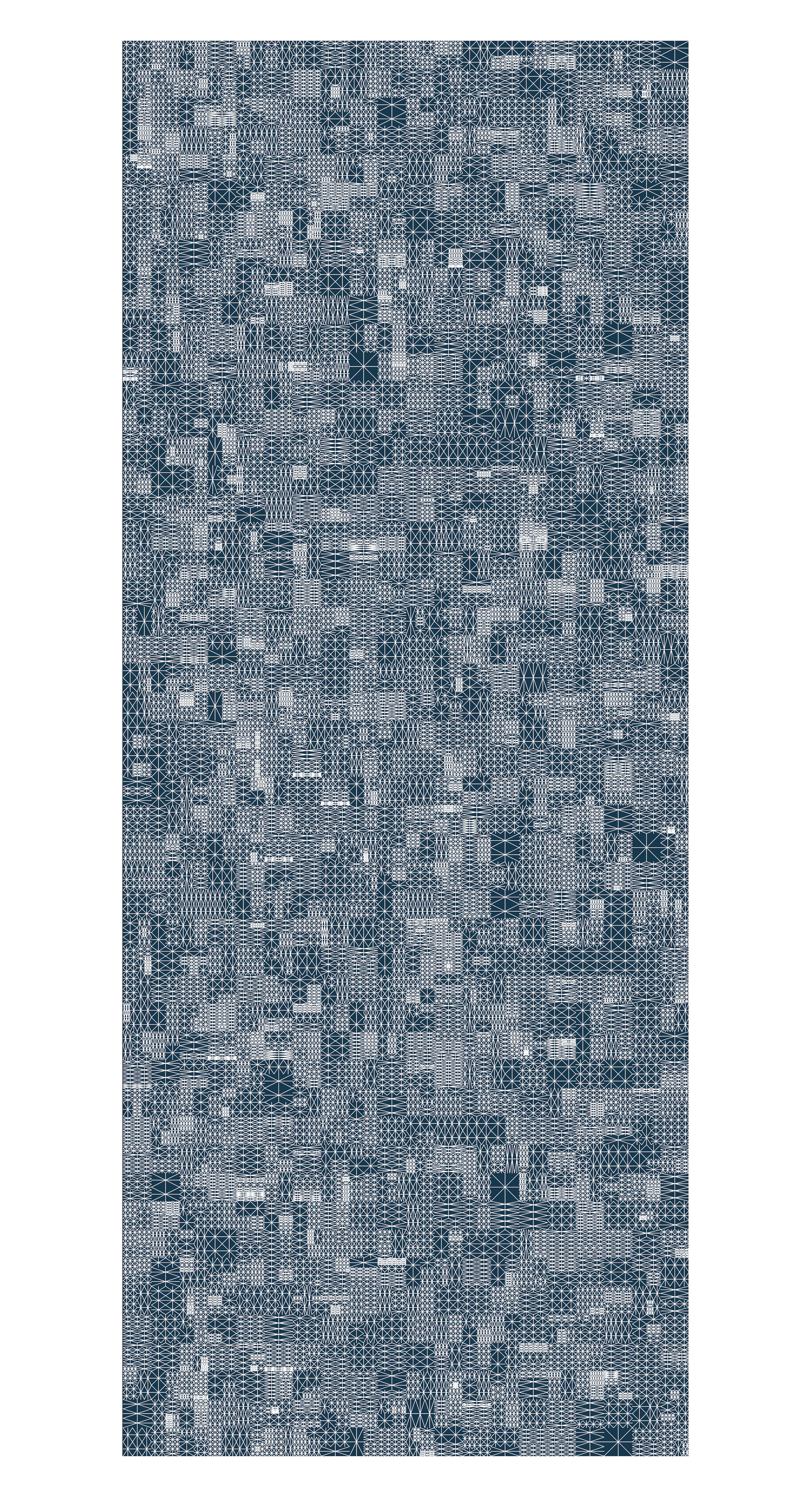
-> Recursive Radical Packing Language, bespoke software, dye-sublimation prints on silk and organza.
-> 108’’ x 52’’
Thousand Character Text-iles | 千字紋 takes the form of dye sublimation prints on two layers of fabric, presenting the ancient Chinese classic "Thousand Character Essay," 千字文, in which the author skillfully created a prose poem using 1,000 non-repeating Chinese characters. To create the print, I used an open source javascript library Recursive Radical Packing Language (RRPL). Initiated by artist Huang Lingdong, the project proposes a method of storing and rendering arbitrary Chinese characters concisely while retaining their structural information. Otherwise, Chinese Characters are commonly stored in Unicode, which assigns a unique number to each character, or in typefaces, which are libraries that contain at least 7,000 glyphs, whereas the default set of glyphs for English is about 230.

This method of describing Chinese characters digitally is only made possible by some characteristics of the language: while there are over 100,000 different characters, each of them can be seen as a combination of components, which are called radicals. Radicals can be considered as building blocks that define the simplest shapes that make up every component. Combination can be applied recursively to describe more complex characters. Such a writing system follows the same logic of pattern-making, where a number of smaller parts compose a bigger pattern, and meanings are imbued on different scales.

In this work, the print on the sheer organza (left) is the original text of “Thousand Character Essay”, and on the right is the pattern generated with the RRPL system out of the characters. Every character has a corresponding pattern, and with the two layers overlap, the text can perfectly be embedded on the pattern.


Special thanks to Jeanette Cosentini for their support in the fabric printing production.
